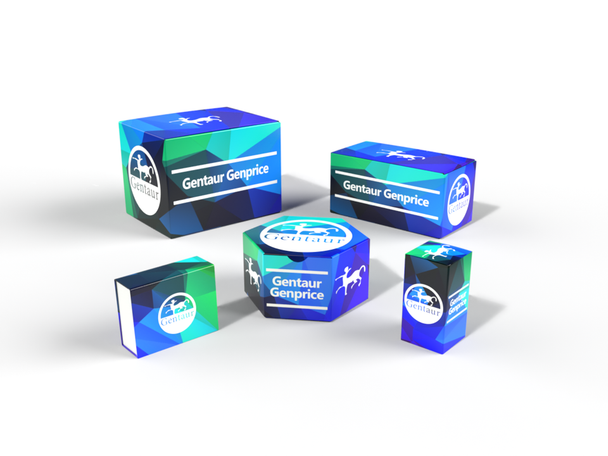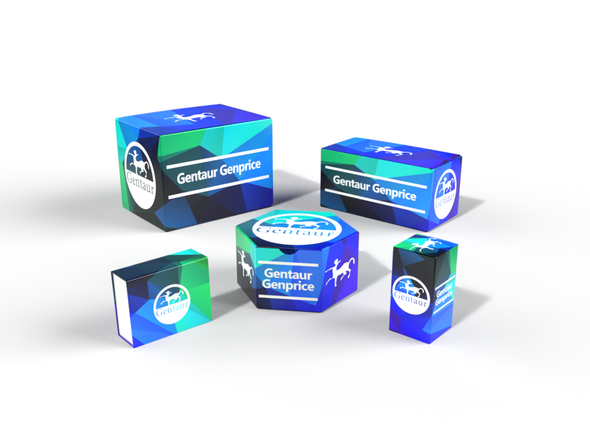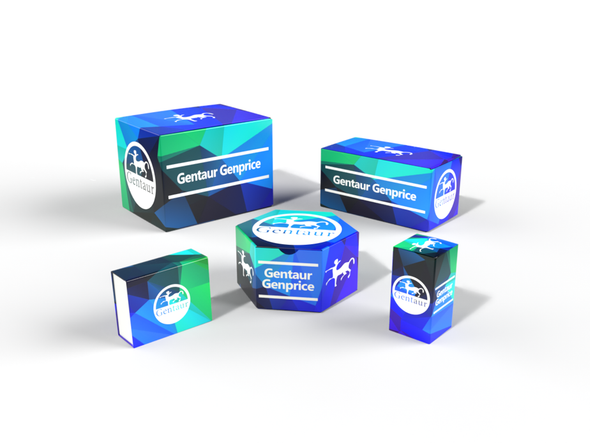Description
IMPORTANT DISCLAIMER
This kit is intended FOR RESEARCH USE ONLY. Under no circumstances should it be used for human diagnostic purposes.
INTRODUCTION
The attachment of polyethylene glycol (PEG) chains to therapeutic proteins increases their efficacy by slowing proteolytic degradation and decreasing the rate of clearance from the circulatory system (refs. 1 & 2). The pharmacodynamics of PEGylated proteins are often evaluated using an assay specific for the polypeptide chain. Such an approach requires the time consuming and expensive construction of a specific immunoassay. The PEG SPARCL™ assay detects the PEG chain and is therefore suitable for assessment of the pharmacodynamics of a range of PEGylated biologics and unconjugated PEGs. Whereas our methoxy-PEG (mPEG) SPARCL kit™ (MPEG-SP) detects only mPEG, this kit detects all linear PEG chains >5 kDa.1
PRINCIPLE OF THE ASSAY
The PEG SPARCL™2 (Spatial Proximity Analyte Reagent Capture Luminescence, ref 3) assay uses a monoclonal antibody (1D9-6) developed at Life Diagnostics that binds to the PEG backbone. Two 1D9-6 conjugates are used; horseradish peroxidase (HRP) and acridan, a chemiluminescent substrate. When HRP and acridan conjugated antibodies bind to PEG they are brought into close proximity. With the addition of hydrogen peroxide, HRP catalyzes oxidation of proximal acridan molecules causing a flash of chemiluminescence. Acridan conjugated antibodies distant from HRP produce no signal. This principle allows the development of a homogeneous assay that allows rapid determination of PEG concentrations. In studies at Life Diagnostics, we estimated that 1D9-6 binds to a portion of the PEG backbone approximately 20 oxyethylene units long (~1 kDa). Higher molecular weight PEG chains and proteins PEGylated at multiple sites bind multiple acridan and HRP conjugates, influencing the luminescence signal and assay sensitivity (Figures 1 & 2, Table 1). The HRP and acridan conjugates provided with the kit are mixed with standards and diluted samples in wells of the 96-well SPARCL™ plate provided with the kit3. After incubation for 30 minutes on a shaker at 25°C and 150 rpm, the plate is placed into a luminometer. Trigger solution containing hydrogen peroxide is injected into each well and luminescence is immediately measured. The concentration of PEG is proportional to luminescence and is derived from a standard curve.
MATERIALS AND COMPONENTS
Materials provided with the kit:
• Anti-PEG HRP stock Store ≤ -70°C
• Anti-PEG acridan stock Store ≤ -70°C
• 10 kDa mPEG-amine stock Store ≤ -70°C
• Diluent: PEGD50-1, 2 x 50 ml
• Trigger solution: TS7-1, 7 ml
• White SPARCL™ plate (12 x 8-well) .
• Clear untreated 96-well plate
Materials required but not provided:
• Precision pipettes and tips
• Polypropylene tubes
• Vortex mixer
• Plate incubator/shaker
• Luminometer capable of simultaneous injection & measurement
• Curve fitting software
STORAGE
Store the HRP conjugate, acridan conjugate and CRP stock at -70°C (they may be stored at -20°Cfor one week). The remainder of the kit should be stored at 2-8°C. The SPARCL™ plate should be kept in a sealed bag with desiccant and antioxidant. The kit will remain stable for at least six months from the date of purchase, provided that the components are stored as described above.
GENERAL INSTRUCTIONS
1. Please take the time to completely read all instructions before starting your assay. Contact us if you need clarification.
2. All reagents used in the assay should be allowed to reach room temperature (25°C) before use.
3. It is important that standards and samples be added to the SPARCL™ plate quickly. If testing large numbers of samples, rather than pipetting standards and samples directly into the white SPARCL™ plate using a single channel pipettor, we recommend the following. First, pipette an excess volume of standards and samples into appropriate wells of the clear 96- well plate. Then use an 8- or 12-channel multipipettor to quickly and efficiently transfer 50 ml aliquots to the appropriate wells of the white SPARCL™ plate. The wells of the clear plate hold a maximum volume of 300 ml.
4. Follow the sequence of events below when running the assay.






